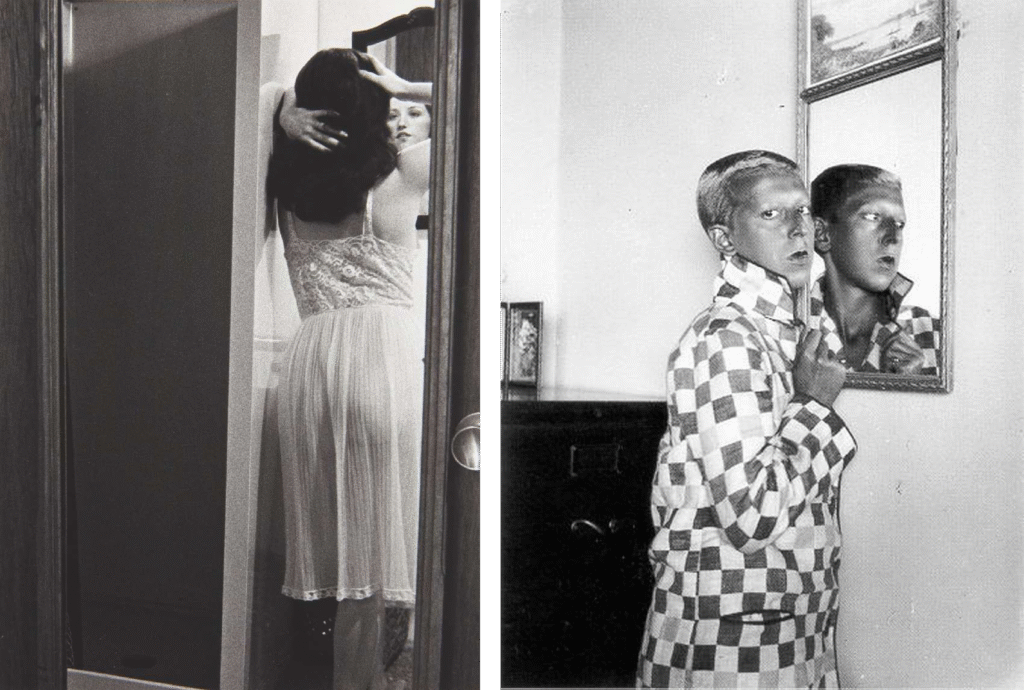Le Théatre de soi
Claude Cahun, uses self-portraiture as a means of exploring the boundaries of gender identity, the body and the self. Her photographic work, often produced in collaboration with her partner Marcel Moore, depicts a shifting, elusive ‘self’ that rejects fixed categories. For Cahun, intimacy is not a fixed private sphere but a space for reinvention, cross-dressing and ambiguity. She photographs herself in drag, androgynous, sometimes fragile, sometimes provocative, constantly blurring the boundaries between inside and outside, public and private.
Cindy Sherman, paying homage to Cahun at the beginning of her career, pursued similar research but with a different approach. From the 1970s onwards, she photographed herself in staged scenes in which she embodied female stereotypes from cinema, television and advertising. Through her series, she questioned the construction of social and media identity. Unlike Cahun, Sherman erases her own intimacy by embodying roles, masks and characters. Yet this distance creates a paradoxical form of intimacy: by never showing who she really is, she reveals the multiplicity of facades that everyone adopts in their lives. Sherman questions the cultural construction of femininity, the way in which intimacy becomes a visual product, often coded and standardised.
Both artists therefore treat intimacy as a playground but also as a form of resistance. For Cahun, it is an intimacy experienced and offered as a poetic and political enigma. For Sherman, it is an intimacy dissolved in artifice, distanced in order to better deconstruct it. One blurs the boundaries of her real identity, the other erases them behind masks. Thus, Cahun and Sherman, each in their own way, redefine intimacy: not as an inner truth to be revealed, but as a space of metamorphosis where the gaze—especially that of the other—is always summoned, questioned, displaced.
Where Cahun deconstructs the patriarchal gaze through enigmatic staging, Sherman uses the visual language of advertising and cinema to show how the image of women is shaped — and objectified — by the media. Both artists denounce, each in their own way, the standardisation of female identity and the female body. Cahun's work is now considered an essential reference in the history of performative self-portraiture, and Sherman is among those who have continued its critical momentum.

A surrealist photographer and writer born in 1894 in Nantes and died in 1954 in Jersey, Claude Cahun was a pioneer of self-portraiture. An activist and avant-garde artist, she explored questions of identity and gender by staging herself in multiple forms, combining cross-dressing and ambiguity, blurring the boundaries between masculine and feminine.
An American photographer and visual artist born in New Jersey in 1954, Cindy Sherman explores identity, gender and social roles through fictional self-portraits. Through cross-dressing and staging, she deconstructs social and cultural stereotypes, creating characters that question the norms and expectations imposed by society.

